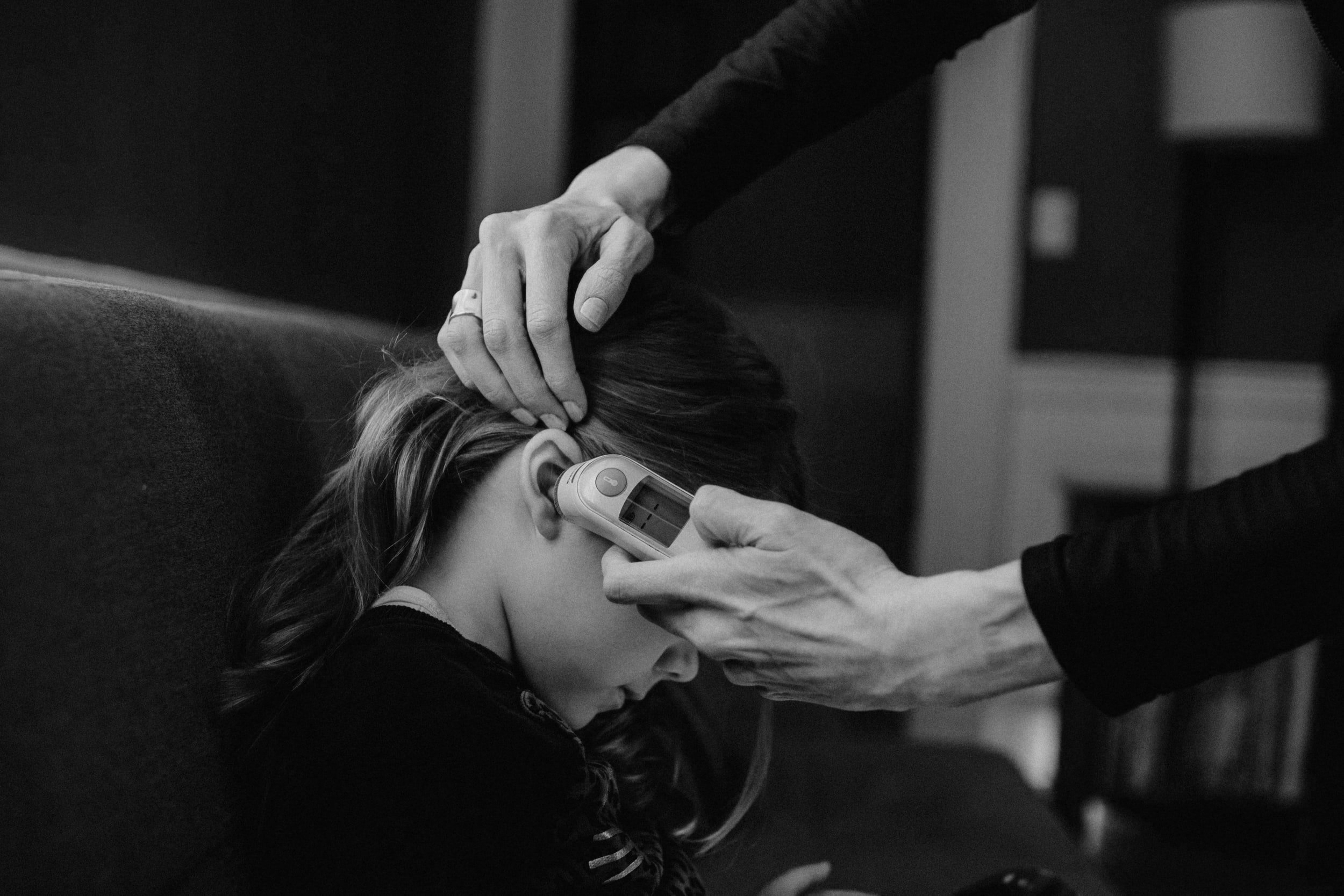
Fevers
Fever is one of the symptoms that parents fear the most, but it doesn't have to be. In fact, in most cases, a fever needs to reach above 106 degrees Fahrenheit to cause permanent organ damage, and in most kids, the brain won't let the body get that hot.
A fever is the body's response ... it is not something that is a direct result of the virus or bacteria or whatever that usually precedes it. In pediatrics, we usually see fevers as a result of viral infections. Why does the body respond to a virus with a fever? Well, the fever helps the body's immune system to work better and hampers the virus from working quite so well, so the end result is that the body will fight off and kill the virus better. So a fever is actually helpful when a child is sick! Problem is, when the body is at 102 degrees, most of the time, it doesn't feel great. The real purpose of treating a fever in most cases, then, is to help the child feel more comfortable by bringing it down, NOT to prevent brain damage or something like that. In most cases of viral infections (colds, stomach bugs, etc) the fever is in the first 96 hours, and may come and go, and may not go all the way down with anti-fever medications. That's ok and won't harm your child.
No harm, but my child feels horrible! He's got a headache, or body aches, or has those dull glassy eyes, or is throwing up! What do I do? If he/she is miserable, it is absolutely a wonderful idea to treat the fever with antipyretics like acetaminophen or ibuprofen. First you have to give the right dose. The best place to get the right dose is your doctor's office. Most times, the dose on the bottle is underestimated, to give a margin of safety. However, your doctor's office can tell you the safest maximum dose to give your child based on his or her weight, not age. Ibuprofen and acetaminophen work differently, so they can be given together without worrying about interacting with each other. However, sometimes, tired parents who are losing sleep taking care of a miserable sick child can lose track of which medication they gave last, so if you regularly make it a habit of "staggering Tylenol and Advil," have a good system to make sure you don't give the wrong one. Usually, I recommend mostly giving one of the two, then using the other one as a spot dose if the fever is still high and causing discomfort but it's too soon to give the first one. Ibuprofen can upset the stomach if the child hasn't eaten, and can irritate the kidneys if the child isn't well hydrated. It also shouldn't be given to children younger than 6 months old. Acetaminophen in the right doses is safer in the short run, but can build up and lead to liver issues if given for a really extended period of time. Your doctor's office can give you specific guidance in your child's specific situation.
A lot of parents try to give their kids a cool bath to bring down their temperature if they have a high fever. This may work, but only if the child has acetaminophen or ibuprofen already in their system. Let me explain ... a child's temperature control center is in their brainstem. When that child has a fever, their brainstem is making their body's temperature rise. Like a thermostat for a house set on "heat if temp falls below 102." If you try to do something externally to decrease the temperature (cool bath for kid, comparable to opening up doors and windows) the child's body will still try to get the temperature back up to 102 (comparison is that the heater will kick in to keep the temperature at 102). What the body does is shiver and shunt blood away from the extremities, which actually makes the child even more uncomfortable. The thermostat has to be reset first, with acetaminophen or ibuprofen, and then given a chance to kick in, then you help the body reach the new reset temperature (which can only be at most 2-3 degrees lower than what it was at with the fever) by a lukewarm bath, which allows for evaporative heat loss.
So in summary, if your child has a fever, evaluate first to see if they're uncomfortable. If not, no need to treat. If so, treat with one or the other medication according to your doctor's office's recommendations, followed 30-45 minutes later with a lukewarm bath if necessary to bring down the fever more effectively. If the fever was above 105 and not coming down with medication and bath, go ahead and go to the ER. Regardless of the number the fever is at, if the child is unresponsive or on the other hand inconsolable, go to the ER. An infant younger than 1-2 months old with temperature 100.5 or higher (the technical definition of fever) should go to the ER, not necessarily because that temperature will harm them, but because even a low grade fever in that young of an infant could actually signify a serious infection that needs to be addressed. Otherwise, though, just make sure your child is well hydrated with his/her fluid of choice, and see if the fever goes away for good in about 72 hours. If not, you should see your pediatrician. If your child has other concerning symptoms, obviously, it's a good idea to come in sooner.
